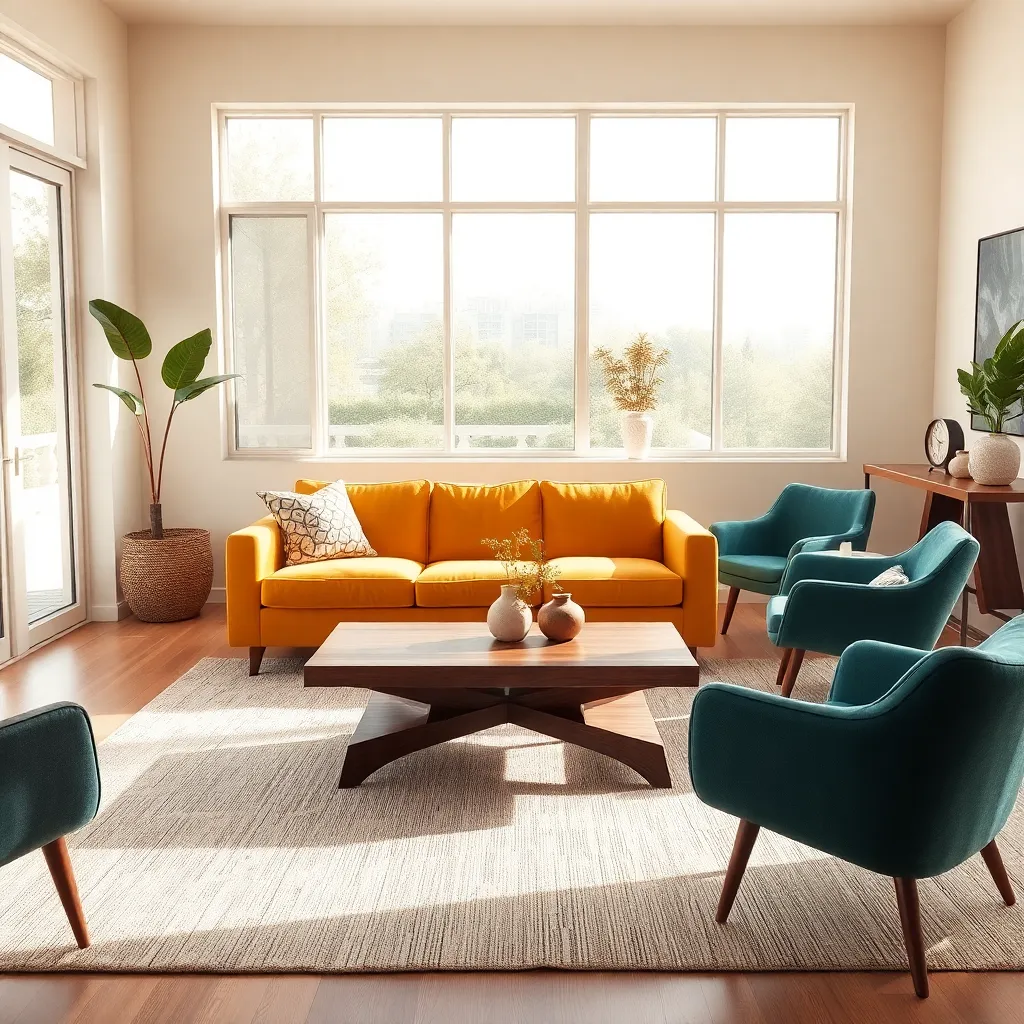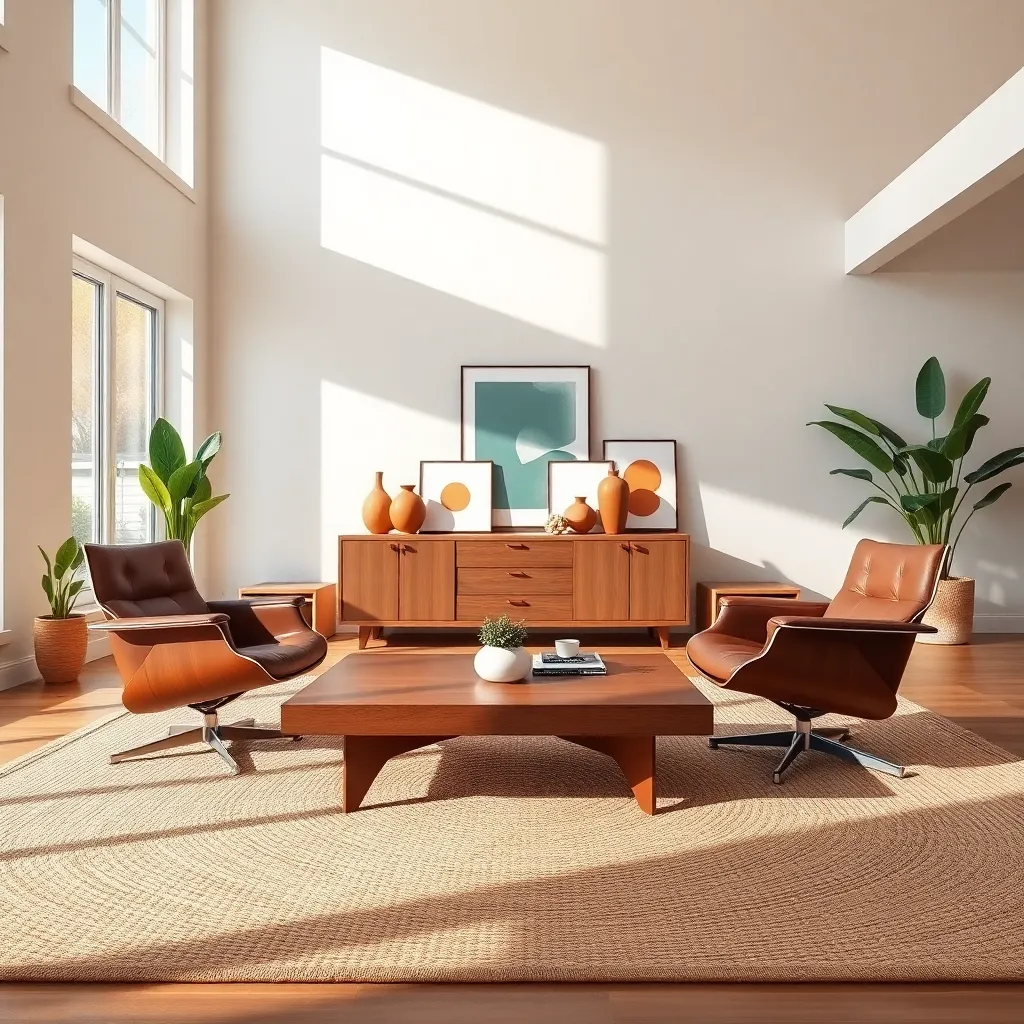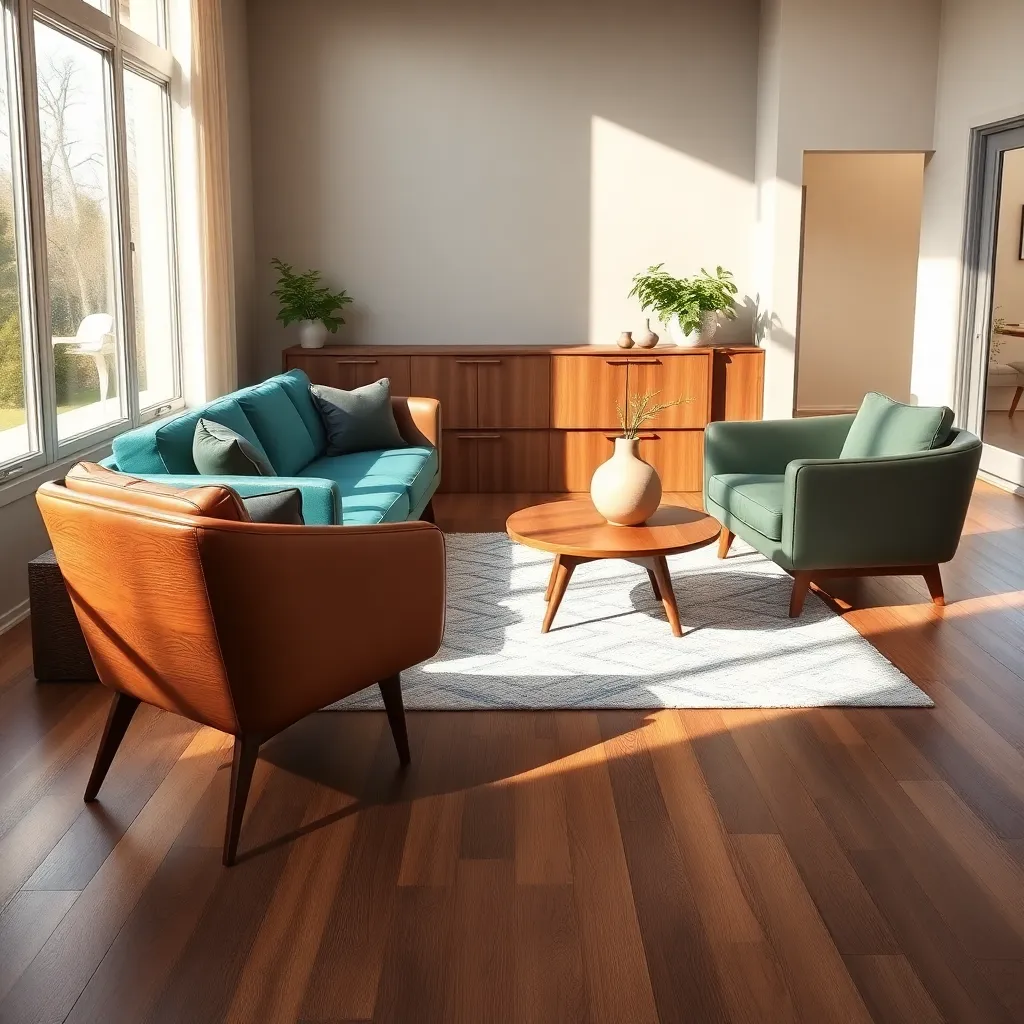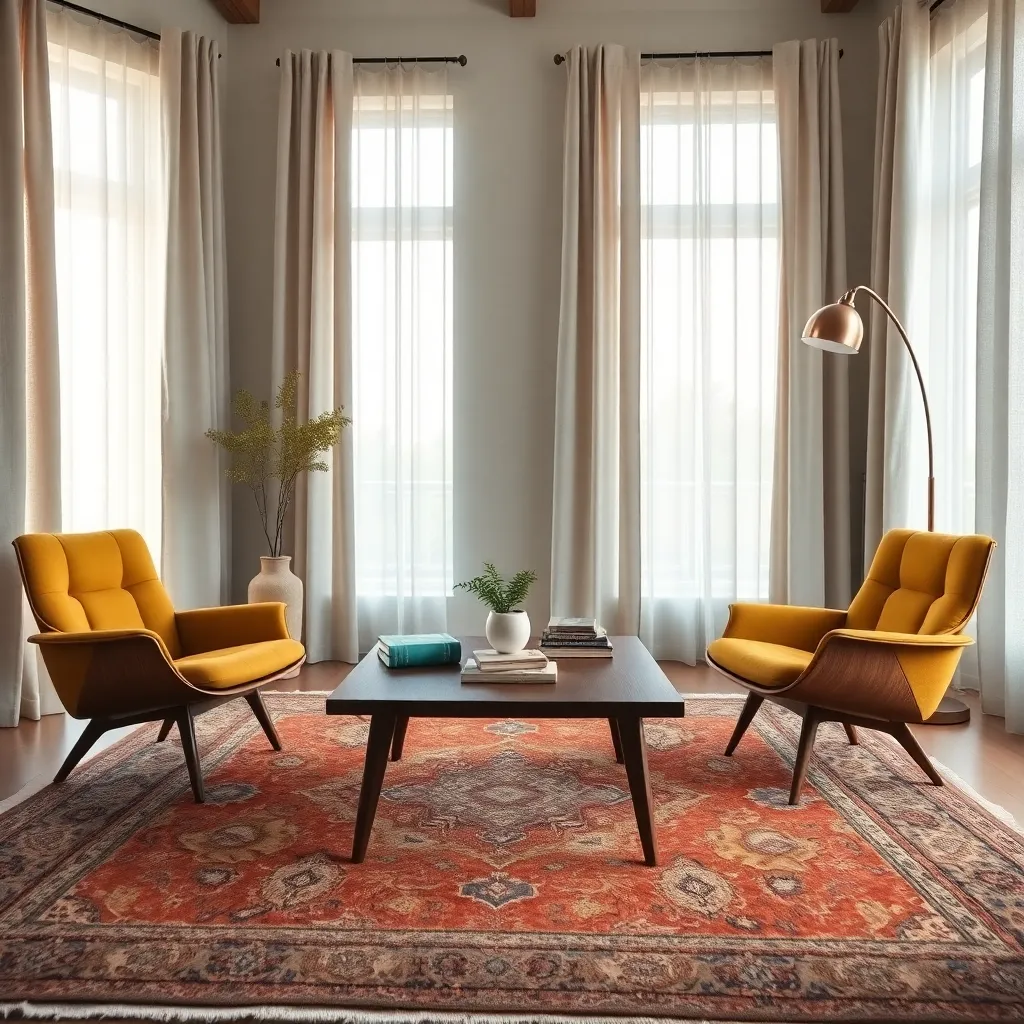Step into the world of mid-century modern furniture, where timeless design meets contemporary living. Whether you’re just dipping your toes into the realm of interior decorating or you’re a seasoned pro looking to refresh your space, understanding this iconic style can transform any room. Mid-century modern is more than just a design trend; it’s a celebration of simplicity, functionality, and elegance that has stood the test of time.
This article will guide you through the essentials of mid-century modern furniture, highlighting pieces that balance form and function with effortless grace. From the gentle curves of an Eames chair to the sleek lines of a Noguchi table, you’ll discover how these elements can introduce both harmony and contrast to your home. For beginners, we’ll offer practical tips on selecting the right pieces, while seasoned decorators will find inspiration in fresh ways to incorporate this style into existing decor.
Prepare to explore the nuances that make mid-century modern so enduringly popular, and learn how to introduce its charm into your own living spaces. We’ll delve into the materials, colors, and silhouettes that define this era, offering insights that are both actionable and inspiring. By the end of this article, you’ll be equipped with the knowledge and confidence to curate a home that reflects the undeniable allure of mid-century modern design.
Understanding Mid-century Modern Style

Mid-century modern style is characterized by its clean lines, functional forms, and a seamless connection to the outdoors. To integrate this style, opt for furniture pieces with natural wood finishes and simple silhouettes that emphasize practicality and elegance.
Begin with a foundational piece like a rectangular walnut coffee table or a curved leather sofa to create a focal point in your living room. Place these elements in a way that encourages conversation, such as arranging seating to face each other rather than the television.
For color schemes, embrace a palette of earthy tones such as olive greens, mustard yellows, and rich browns to evoke the natural world. Accentuate these with pops of bold colors like teal or burnt orange through accessories like throw pillows or a statement rug.
Incorporate materials like glass, metal, and plywood to add texture and interest to your space. Consider mixing a glass-top dining table with metal legs and wooden chairs to achieve a harmonious balance of different materials.
Key Features of Iconic Designs

Mid-century modern furniture is characterized by its clean lines, organic curves, and a strong connection with nature. To incorporate this style into your home, focus on choosing pieces with tapered legs and minimal ornamentation, which embody the essence of the era’s streamlined aesthetic.
Consider using materials like teak, walnut, or oak, which are staples of mid-century design. These woods not only offer durability but also add a warm, welcoming tone to any space, making them ideal for both small and large areas.
Color plays a pivotal role in mid-century modern design, often featuring muted tones like olive, mustard, and burnt orange. For a modern twist, pair these hues with neutral backdrops such as white or light gray walls to create a balanced and inviting atmosphere.
When arranging your furniture, aim for a layout that promotes conversation and accessibility. Position seating around a central point, such as a coffee table, to encourage interaction and create a cozy, functional living area.
Lighting is another crucial element that can enhance mid-century modern interiors. Opt for fixtures with sleek, geometric shapes or pendant lights with metallic finishes to add a touch of elegance and ensure your space is well-lit without overpowering the design.
For those looking to add a touch of flair, incorporate textiles in bold patterns like geometric prints or abstract designs. These can be introduced through accent pillows, area rugs, or throws, providing an opportunity to express your personal style while staying true to mid-century principles.
Popular Materials and Finishes

Mid-century modern furniture is celebrated for its use of warm woods like teak, walnut, and oak. These materials not only bring a timeless elegance to any room but also add a natural warmth that complements both neutral and bold color palettes.
For a beginner, choosing furniture with a natural wood finish can be an easy way to introduce mid-century modern flair into your space. Pairing these pieces with a soft, neutral wall color such as warm white or light gray can enhance the wood’s natural beauty and create a serene atmosphere.
Advanced decorators might explore contrasting finishes by incorporating pieces with both matte and glossy surfaces. This can be achieved by combining a matte walnut dining table with glossy ceramic or glass accessories, adding depth and interest to the room.
Textured fabrics, such as leather and wool, are also quintessential in mid-century modern design. Incorporating a leather sofa or a wool area rug can provide a tactile contrast to the sleek lines of the furniture, making the space feel inviting and lived-in.
Integrating Vintage with Modern

When integrating vintage elements with modern mid-century furniture, begin by selecting a standout vintage piece, like a classic armchair or an ornate coffee table. This will serve as your room’s focal point, creating a harmonious blend with the sleek lines of mid-century modern pieces.
Consider using a color palette that complements both styles to achieve a cohesive look. Neutral tones like beige or white can provide a backdrop that allows both vintage and modern items to shine, while adding pops of color through accessories can tie the room together.
Mixing textures is another effective way to integrate these styles. Pair a plush vintage rug with the smooth surfaces of mid-century furniture to add depth and visual interest to your space.
For those looking to take it a step further, incorporate vintage lighting fixtures with your modern furniture. A retro chandelier or floor lamp can add a touch of elegance and nostalgia while illuminating the clean lines of your modern pieces.
Accessorizing for a Timeless Look

To achieve a timeless look with mid-century modern furniture, focus on choosing accessories that enhance simplicity and elegance. Opt for pieces like sleek vases or geometric art that echo the clean lines of your furniture.
Consider layering textures to add depth and interest to your space. Incorporate materials such as leather, wood, and metal, which complement the natural elements often found in mid-century design.
Lighting plays a crucial role in accessorizing for a timeless look. Select fixtures with minimalist designs and warm tones, such as a brass floor lamp or a pendant light with a frosted glass shade, to create a cozy ambiance.
For a cohesive aesthetic, combine neutral color palettes with bold accents. Use a muted backdrop of whites, greys, or soft greens, and introduce vibrant touches through cushions or artwork in mustard, teal, or orange.
Artwork is another vital component in mid-century modern spaces. Choose pieces that feature abstract forms or nature-inspired motifs, and hang them at eye level to maintain visual balance.
Finally, pay attention to the arrangement of your accessories. Group items in odd numbers and vary their heights to create interest and harmony on shelves or coffee tables.
Conclusion: Growing Success with These Plants
As we journeyed through the world of mid-century modern furniture, we uncovered five key relationship concepts that can transform your connections. We explored the importance of blending styles, much like combining personal tastes in relationships to create harmony. We delved into the art of functionality, emphasizing the need for practical communication. Our third point highlighted the elegance of simplicity, reminding us that sometimes less is more in nurturing deep, meaningful connections. We also discussed the strength found in timeless designs, encouraging us to build relationships that withstand the test of time. Lastly, we recognized the beauty of authenticity, urging us to show up as our true selves in our relationships.
Now, take a moment to reflect on these concepts and choose one to implement in your relationship today. Perhaps it’s initiating a heartfelt conversation or simply appreciating the authenticity of your partner.
Remember, building strong, lasting relationships is an ongoing journey. Bookmark this article to revisit these insights and track your progress. By doing so, you’re setting the foundation for a relationship that not only thrives today but flourishes well into the future. Embrace these principles, and watch your connections grow deeper and more fulfilling.
